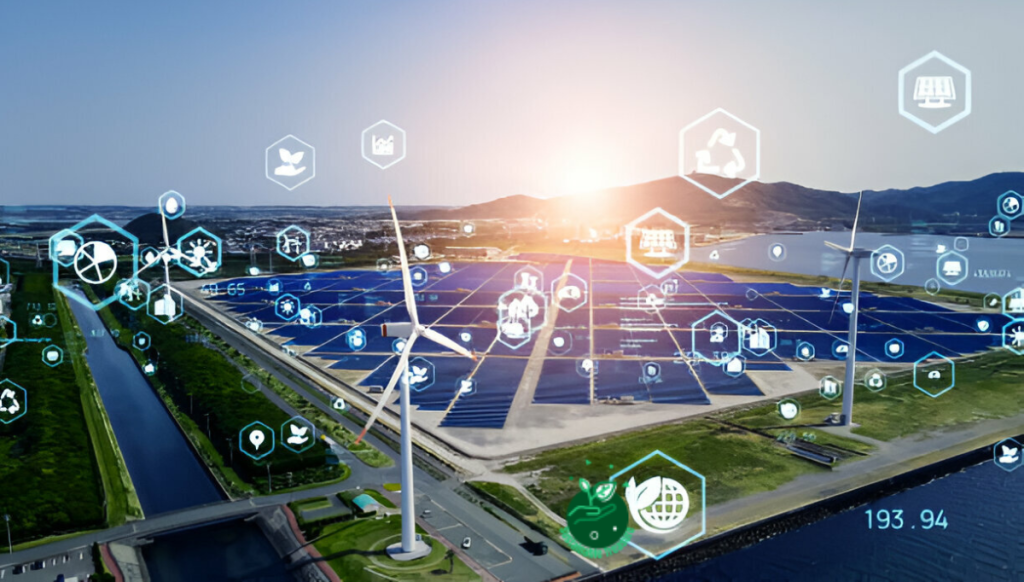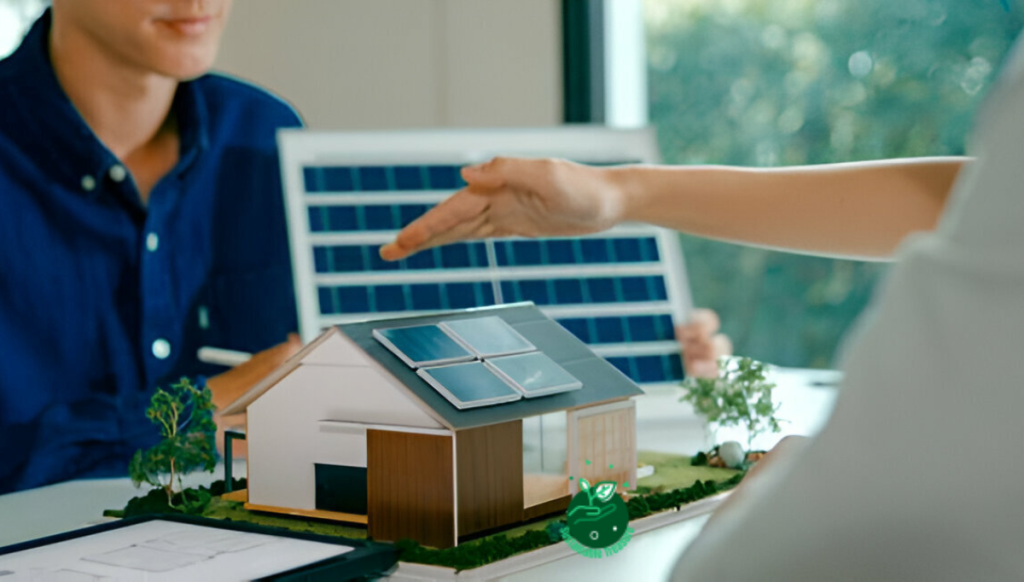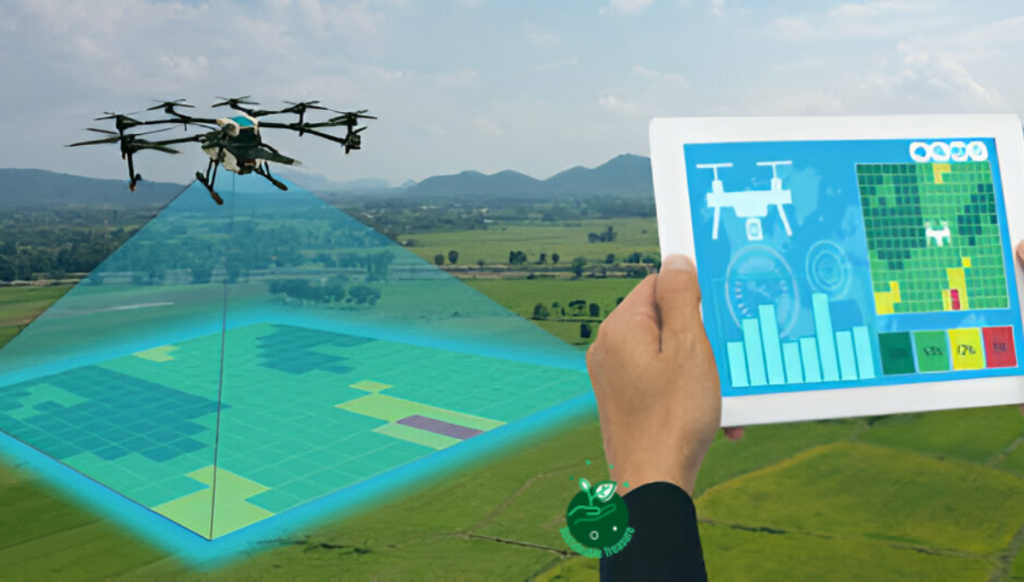Table of Contents
Do you want to know what is the role of technology in conservation investments? Yes, Technology plays a pivotal role in driving conservation investments and empowering efforts to protect our planet’s biodiversity.
In the heart of the Amazon rainforest, a team of researchers witnessed firsthand the devastating impact of illegal logging on the delicate ecosystem.
Equipped with drones and real-time monitoring systems, they could track the activities of poachers and alert local authorities, but the destruction continued unabated.
It was a sobering reminder that advanced technology alone is not enough; it must be coupled with unwavering determination and a genuine commitment to environmental stewardship.
In this article, we will explore the multifaceted role of technology in conservation investments, highlighting the innovative tools and approaches that are reshaping the landscape of environmental protection.
Harnessing Drones for Aerial Surveillance

Drones have emerged as game-changers in conservation efforts, offering unparalleled aerial surveillance capabilities. These unmanned aerial vehicles (UAVs) can access remote and challenging terrains, providing valuable insights into wildlife habitats, poaching activities, and environmental changes.
With high-resolution cameras and specialized sensors, drones can capture detailed imagery and data, aiding in the monitoring of endangered species, tracking illegal activities, and assessing the impact of natural disasters or human interventions on ecosystems.
AI and Machine Learning: Revolutionizing Data Analysis
The vast amount of data collected through various conservation initiatives can be overwhelming to process manually. Enter artificial intelligence (AI) and machine learning, which have revolutionized the way we analyze and interpret this information.
| AI Application | Description |
|---|---|
| Image Recognition | Identify specific species, track population changes, and detect illegal activities from visual data. |
| Predictive Modeling | Forecast environmental changes, species migrations, and potential threats using historical data and machine learning algorithms. |
| Automated Monitoring | Continuously analyze sensor data, satellite imagery, and drone footage to detect patterns and anomalies in real-time. |
By leveraging AI and machine learning, conservationists can make data-driven decisions, allocate resources more effectively, and respond rapidly to emerging threats or opportunities. These technologies offer a powerful tool for protecting biodiversity on a global scale.
Remote Sensing: Unveiling Earth’s Secrets
Remote sensing technologies, such as satellite imagery and airborne sensors, have revolutionized our understanding of the planet’s ecosystems.
These tools provide a bird’s-eye view of vast landscapes, enabling conservationists to monitor changes in land cover, vegetation health, and habitat fragmentation.
Some key applications of remote sensing in conservation include:
- Mapping and monitoring deforestation and habitat loss
- Detecting illegal mining, logging, or agricultural activities
- Assessing the impact of natural disasters on ecosystems
- Identifying potential wildlife corridors and migration routes
By leveraging remote sensing data, conservationists can make informed decisions about resource allocation, prioritize areas for protection, and develop targeted strategies for habitat restoration and species conservation.
Acoustic Monitoring: Listening to Nature’s Symphony
Acoustic monitoring technologies have opened up a new frontier in conservation efforts, allowing researchers to “listen” to the sounds of nature.
By deploying specialized audio recording devices in various ecosystems, conservationists can gather valuable data on species vocalizations, distributions, and behaviors.
Some key benefits of acoustic monitoring include:
- Non-invasive monitoring of elusive or rare species
- Assessing biodiversity levels and ecosystem health
- Detecting illegal activities like poaching or logging
- Monitoring the impact of environmental changes on species’ behaviors
Combined with AI and machine learning techniques, acoustic data can be analyzed to identify specific species, track population trends, and gain insights into the intricate relationships within ecosystems.
Camera Traps: Capturing Wildlife in Action
Camera traps, or remote camera systems, have become invaluable tools for monitoring wildlife populations and studying animal behavior in their natural habitats.
These discrete devices are strategically placed along animal trails, watering holes, or other areas of interest, capturing images or videos whenever triggered by motion or heat signatures.
Key advantages of camera traps include:
- Non-invasive monitoring of shy or elusive species
- Collecting data on species distributions and population sizes
- Documenting rare or cryptic behaviors
- Detecting illegal activities like poaching or habitat encroachment
With advanced image recognition algorithms and machine learning techniques, conservationists can rapidly analyze vast volumes of camera trap data, extracting valuable insights into species dynamics and habitat health.
Citizen Science: Engaging the Public in Conservation
Technology has also empowered citizen science initiatives, allowing members of the public to contribute to conservation efforts through crowdsourced data collection and analysis.
Mobile applications and online platforms enable individuals to report sightings, upload photographs, and participate in various monitoring programs.
Some popular citizen science projects in conservation include:
- iNaturalist: A platform for recording and sharing observations of plants and animals, contributing to biodiversity data.
- eBird: A global platform for birders to submit sightings, helping track bird populations and distributions.
- Zooniverse: A citizen science platform with various projects, including classifying wildlife images and identifying species.
By engaging the public in conservation efforts, these initiatives not only collect valuable data but also raise awareness and promote environmental stewardship.
Crowdfunding and Online Advocacy
The rise of online platforms and social media has revolutionized the way conservation organizations can raise funds and build support for their initiatives. Crowdfunding platforms like Kickstarter and GoFundMe have provided a means for individuals and organizations to connect with a global audience and secure financial backing for their conservation projects.
Additionally, social media channels and advocacy websites have become powerful tools for raising awareness, mobilizing supporters, and influencing policy decisions related to environmental protection and sustainable practices.
Some successful examples include:
- The Nature Conservancy’s online advocacy campaigns and social media presence
- The World Wildlife Fund’s crowdfunding initiatives and digital storytelling efforts
- Conservation International’s online petitions and policy advocacy platforms
By leveraging the power of the internet and digital platforms, conservation organizations can amplify their reach, engage with diverse audiences, and secure the resources and support necessary to drive meaningful change.
Blockchain and Transparency in Conservation Funding
Blockchain technology, best known for its application in cryptocurrencies like Bitcoin, has also found its way into the realm of conservation funding.
By leveraging the transparency and immutability of blockchain ledgers, organizations can ensure that funds allocated for conservation projects are used as intended, promoting accountability and trust among donors and stakeholders.
Some potential applications of blockchain in conservation funding include:
- Tracking the flow of donations and ensuring they reach their intended destinations
- Verifying the authenticity and provenance of products from sustainable sources
- Facilitating peer-to-peer funding and micro-financing for conservation initiatives
- Establishing transparent supply chains for sustainable products and services
By embracing blockchain technology, conservation organizations can build trust, attract more donors, and ensure that resources are efficiently allocated to address pressing environmental challenges.
Virtual Reality: Immersive Conservation Education
Virtual reality (VR) has emerged as a powerful tool for immersive conservation education and awareness campaigns. By creating realistic and engaging virtual environments, organizations can transport viewers to remote ecosystems, showcase the beauty of nature, and highlight the urgency of conservation efforts.
Some examples of VR applications in conservation include:
- Immersive experiences that take viewers on virtual safaris or underwater explorations
- Interactive simulations that demonstrate the impact of human activities on ecosystems
- Educational modules that teach about endangered species, habitat loss, and sustainable practices
By leveraging the power of VR, conservation organizations can connect with audiences in a profound and engaging way, fostering empathy, understanding, and a deeper commitment to environmental stewardship.
Internet of Things (IoT) and Environmental Monitoring
The Internet of Things (IoT) has revolutionized environmental monitoring by enabling the deployment of interconnected sensors and devices across vast landscapes. These networks of smart devices can collect real-time data on various environmental parameters, such as temperature, humidity, air quality, soil moisture, and more.
Some applications of IoT in conservation include:
- Monitoring habitat conditions and detecting early signs of ecological stress
- Tracking the movements and behaviors of wildlife using GPS and motion sensors
- Detecting and responding to wildfires, illegal logging, or poaching activities
- Automating irrigation systems and water management in protected areas or wildlife reserves
By leveraging IoT technologies, conservationists can collect comprehensive and real-time data from remote locations, enabling proactive decision-making and rapid response to potential threats or changes in ecosystem dynamics.
Sustainable Technology: Minimizing Environmental Impact

While technology plays a crucial role in conservation efforts, it’s essential to consider the environmental impact of the technologies themselves. Sustainable practices in the design, manufacturing, and deployment of conservation technologies can help minimize their carbon footprint and ensure they align with the principles of environmental stewardship.
Some approaches to sustainable technology in conservation include:
- Using renewable energy sources to power field equipment and monitoring stations
- Developing biodegradable or recyclable materials for devices and sensors
- Implementing circular economy principles in the production and disposal of conservation technologies
- Optimizing data transmission and storage to reduce energy consumption
By embracing sustainable technology practices, conservation organizations can lead by example and demonstrate their commitment to preserving the planet’s resources while leveraging the power of innovation.
Geospatial Analysis: Mapping Conservation Efforts
Geospatial analysis and mapping technologies have become indispensable tools in conservation efforts, enabling organizations to visualize and analyze spatial data related to ecosystems, species distributions, and human activities. Geographic Information Systems (GIS) and remote sensing data provide a comprehensive view of landscapes, enabling conservationists to identify critical areas for protection, plan restoration efforts, and monitor changes over time.
Some applications of geospatial analysis in conservation include:
- Mapping habitat fragmentation and identifying potential wildlife corridors
- Overlaying species distribution data with land-use patterns and protected area boundaries
- Analyzing the impact of climate change on ecosystems and potential species migration routes
- Identifying hotspots for illegal activities, such as poaching or deforestation
By leveraging geospatial analysis, conservationists can make informed decisions about resource allocation, prioritize areas for intervention, and develop targeted strategies for preserving biodiversity.
3D Printing: Innovative Solutions for Conservation
3D printing technology has opened up new avenues for innovative solutions in conservation efforts. From creating customized tools and equipment to prototyping habitat structures and artificial refuges, 3D printing offers a cost-effective and flexible approach to addressing unique challenges.
Some applications of 3D printing in conservation include:
- Producing prosthetic limbs or protective gear for injured wildlife
- Designing and printing customized monitoring devices or sensor housings
- Creating artificial nesting sites or habitat structures for endangered species
- Rapid prototyping of tools and equipment for fieldwork and research
By leveraging 3D printing, conservation organizations can quickly iterate and test new designs, adapt to specific needs, and produce specialized equipment tailored to their unique requirements, all while minimizing waste and reducing costs.
Augmented Reality (AR): Enhancing Conservation Experiences
Augmented Reality (AR) technology has the potential to revolutionize conservation education and public engagement efforts. By overlaying digital information and interactive elements onto the real world, AR applications can provide immersive and informative experiences that deepen understanding and foster appreciation for nature and conservation efforts.
Some potential applications of AR in conservation include:
- Interactive exhibits and displays at zoos, museums, and nature centers
- Mobile apps that overlay information about local flora and fauna when pointing a device at natural surroundings
- Guided nature tours and trails with AR-enhanced storytelling and educational content
- Visualization of restoration projects or potential future scenarios for ecosystems
By leveraging AR technology, conservation organizations can create engaging and interactive experiences that captivate audiences, raise awareness, and inspire action towards environmental stewardship.
Robotics: Exploring Inaccessible Environments
Robotics has emerged as a valuable tool in conservation efforts, enabling researchers and conservationists to explore and study environments that are otherwise inaccessible or hazardous for humans. From underwater robots to terrestrial rovers, these advanced technologies can venture into remote or hostile terrain, collecting data and providing insights into ecosystems that would otherwise remain unexplored.
Some applications of robotics in conservation include:
- Underwater drones and remotely operated vehicles (ROVs) for studying marine ecosystems
- Terrestrial rovers for exploring hazardous or rugged terrain, such as volcanic or glacial environments
- Aerial drones equipped with specialized sensors for monitoring remote or inaccessible areas
By leveraging robotics, conservationists can gather valuable data from previously inaccessible regions, enabling them to better understand and protect the planet’s most fragile and vulnerable ecosystems.
Cloud Computing and Big Data Analytics
The vast amount of data generated by various conservation technologies, from remote sensing to IoT devices, necessitates robust data storage and processing capabilities. Cloud computing and big data analytics have emerged as essential tools for managing and analyzing these massive datasets, enabling conservationists to extract valuable insights and inform decision-making.
Some applications of cloud computing and big data analytics in conservation include:
- Storing and processing large volumes of remote sensing and geospatial data
- Analyzing real-time data streams from IoT devices and sensor networks
- Running complex predictive models and simulations on ecosystem dynamics
- Integrating multiple data sources for comprehensive analysis and visualization
By leveraging the power of cloud computing and big data analytics, conservation organizations can harness the full potential of the vast amounts of data at their disposal, enabling data-driven decision-making and driving more effective conservation strategies.
Renewable Energy Integration
As conservation efforts increasingly rely on technology, it’s crucial to ensure that these technologies are powered by sustainable and renewable energy sources. Integrating renewable energy solutions, such as solar panels, wind turbines, and hydroelectric systems, into conservation projects can help minimize their environmental impact and align with the principles of sustainability.
Some benefits of renewable energy integration in conservation include:
- Reducing the carbon footprint of field operations and monitoring stations
- Ensuring a reliable and independent energy source in remote locations
- Minimizing the need for fossil fuel transportation and logistics
- Demonstrating a commitment to sustainable practices and leading by example
By embracing renewable energy solutions, conservation organizations can not only power their technologies more sustainably but also serve as models for environmental stewardship and inspire others to adopt eco-friendly practices.
Partnerships and Collaborative Platforms
The complexity of conservation challenges often requires collaboration and knowledge-sharing among various stakeholders, including researchers, conservation organizations, government agencies, and local communities.
Technology has facilitated the development of collaborative platforms and partnerships, enabling efficient communication, data sharing, and coordinated efforts.
Some examples of collaborative platforms and partnerships in conservation include:
- Online portals and databases for sharing research findings and best practices
- Interdisciplinary research collaborations leveraging diverse expertise and technologies
- Public-private partnerships for funding and implementing conservation initiatives
- Community-based conservation programs engaging local stakeholders and indigenous populations
By fostering partnerships and leveraging collaborative platforms, conservation efforts can benefit from diverse perspectives, pooled resources, and collective knowledge, ultimately leading to more effective and sustainable solutions for preserving the planet’s biodiversity.
Open Data and Citizen Science Platforms
The open data movement and citizen science platforms have played a pivotal role in democratizing conservation efforts and engaging the public in data collection and analysis. By providing access to data and tools, these platforms empower individuals and communities to contribute to conservation initiatives, fostering a sense of ownership and collective responsibility.
Some examples of open data and citizen science platforms in conservation include:
- Global Biodiversity Information Facility (GBIF): An open data platform for biodiversity data
- iNaturalist: A citizen science platform for recording and sharing observations of plants and animals
- Zooniverse: A collection of citizen science projects, including wildlife classification and monitoring
By embracing open data and citizen science platforms, conservation organizations can tap into the power of crowdsourcing, engage diverse communities, and foster a broader understanding and appreciation for the natural world.
Ethics and Responsible Use of Technology
While technology offers numerous opportunities for advancing conservation efforts, it’s crucial to consider the ethical implications and responsible use of these technologies. Issues such as privacy, data security, and the potential unintended consequences of technological interventions must be carefully evaluated and addressed.
Some ethical considerations in the use of technology for conservation include:
- Ensuring the privacy and safety of individuals involved in conservation initiatives
- Protecting sensitive data and preventing misuse or exploitation
- Assessing the potential environmental impact of deployed technologies
- Engaging with local communities and respecting cultural values and traditions
By adopting a responsible and ethical approach to the use of technology, conservation organizations can build trust, maintain integrity, and ensure that their efforts align with the principles of environmental stewardship and social responsibility.
FAQs

How Can Technology Support Conservation Efforts Financially?
Technology offers new avenues for fundraising and crowdsourcing, enabling conservation organizations to tap into a global network of supporters. Online platforms and social media campaigns have proven effective in raising awareness and securing financial backing for various initiatives.
What Are Some Cutting-Edge Technologies Used In Conservation?
Cutting-edge technologies like drones, remote sensing, AI, machine learning, and Internet of Things (IoT) sensors are revolutionizing conservation efforts. These tools provide unprecedented access to data, enable real-time monitoring, and empower data-driven decision-making.
How Does AI Contribute To Conservation?
Artificial Intelligence (AI) and machine learning techniques are invaluable for processing and analyzing the vast amounts of data collected through various conservation technologies. AI can identify species, detect patterns, forecast environmental changes, and automate monitoring processes.
What Role Do Citizen Science Platforms Play In Conservation?
Citizen science platforms like iNaturalist and eBird engage the public in data collection and monitoring efforts. These crowdsourced contributions not only provide valuable data but also raise awareness and promote environmental stewardship.
How Can Blockchain Technology Support Transparent Conservation Funding?
Blockchain technology offers a transparent and immutable ledger for tracking the flow of funds, ensuring donations reach their intended destinations. It can also verify the authenticity of sustainable products and facilitate peer-to-peer financing for conservation projects.
What Are The Benefits of Using Drones In Conservation?
Drones offer unparalleled aerial surveillance capabilities, enabling access to remote and challenging terrains. They can monitor wildlife habitats, detect illegal activities, and assess environmental changes with high-resolution cameras and specialized sensors.
How Does Virtual Reality (VR) Aid In Conservation Education?
Virtual reality (VR) creates immersive and engaging experiences that transport viewers to remote ecosystems, showcasing nature’s beauty and highlighting the urgency of conservation efforts. VR can foster empathy and a deeper commitment to environmental stewardship.
What Ethical Considerations Should Be Addressed When Using Technology For Conservation?
Ethical considerations include ensuring privacy and data security, assessing the potential environmental impact of deployed technologies, and respecting local communities’ cultural values and traditions. Responsible and ethical use of technology is crucial for building trust and maintaining integrity.
Conclusion
In conclusion, technology has emerged as a powerful ally in conservation efforts, offering innovative tools and solutions to address the pressing challenges of biodiversity loss and environmental degradation.
From remote sensing and aerial surveillance to artificial intelligence and citizen science platforms, these technologies empower conservationists with unprecedented access to data, insights, and collaborative opportunities.
However, it’s crucial to embrace these technologies responsibly and ethically, ensuring that their deployment aligns with the principles of environmental stewardship, social responsibility, and respect for local communities and cultural traditions.
As we navigate the complex challenges of conservation in an increasingly technologically-driven world, it’s essential to strike a balance between harnessing the power of innovation and preserving the delicate ecosystems we aim to protect.
By fostering collaborations, engaging diverse stakeholders, and embracing sustainable practices, we can leverage technology as a catalyst for positive change, empowering conservation efforts to safeguard our planet’s biodiversity for generations to come.
The path ahead is not without obstacles, but the integration of technology and conservation presents a unique opportunity to redefine our relationship with the natural world.
Through data-driven decision-making, innovative solutions, and a shared commitment to environmental stewardship, we can forge a future where technology and conservation coexist in harmony, ensuring the preservation of our planet’s rich tapestry of life for centuries to come.



